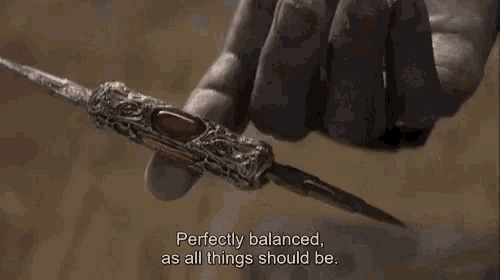Chapter 4 Equilibrium
“Equilibrium is a state, not of rest, but of balanced activities.”– James Kendall, Smith’s College Chemistry, 192511
Key concepts:
- All closed systems result in equilibrium
- A force drives a system to equilibrium
- At equilibrium, the driving force is balanced by an opposing force and changes in the system are no longer visible
Balans

As we have seen in the previous chapter, the following reaction
\[2\mathrm{NO_2}(g) \longrightarrow \mathrm{2NO}(g) + \mathrm{O_2}(g)\]
follows a two step mechanism, one of which is shown below.
\[\begin{align*} 2\mathrm{NO_2}(g) &\underset{k_{-1}}{\stackrel{k_1}{\rightleftharpoons}} \mathrm{(NO_2)_2}(g) &&\mathrm{(fast)} \\[1.5ex] \mathrm{(NO_2)_2}(g) &\overset{k_2}\longrightarrow \mathrm{2NO}(g) + \mathrm{O_2}(g) &&\mathrm{(slow)} \end{align*}\]
We focus our attention on the first step. Below is given this step with the products written in two different ways but are equivalent for the purpose of our discussion.
\[\begin{align*} 2\mathrm{NO_2}(g) &\underset{k_{-1}}{\stackrel{k_1}{\rightleftharpoons}} \mathrm{(NO_2)_2}(g) \quad ~~\mathrm{or}\\[1.5ex] 2\mathrm{NO_2}(g) &\underset{k_{-1}}{\stackrel{k_1}{\rightleftharpoons}} \mathrm{N_2O_4}(g) \end{align*}\]
Note that the NO2 dimer can adopt different configurations and is sometimes written as N2O4. We will proceed with the latter for clarity/distinction from the reactants.
When the reaction initially begins (where [NO2]0 > 0 and [N2O4]0 = 0) a force drives the reaction toward the right (towards product). There is initially no opposing force (i.e. any force to drive the reaction left towards reactants) as there is no N2O4 present to do so. However, upon the creation of any N2O4, the opposing force exists and begins to grow with increasing N2O4.
As the system evolves, we will be able to see a decrease in the amount of reactants and an increase in the amount of products. The changes in these concentrations become smaller and smaller until, at some point in the reaction, the forward and reverse forces will become equal. At this point, the changes in the amount of reactants and products equals zero. As stated by James Kendall, this is the point at which equilibrium is reached. The system is not at rest. The reaction continues to occur (reactants are produced/consumed and products are produced and consumed), but the visible changes in the amounts of reactants and products ceases to exist. They are balanced.
Activity: Find the nearest cinder block wall. Push as hard as you can against it. Continue to push against the wall and do not stop. You and the wall rapidly reach equilibrium. The force you applied is rapidly opposed in a very short time span and you reach equilibrium even though you continue to apply a force to the wall.